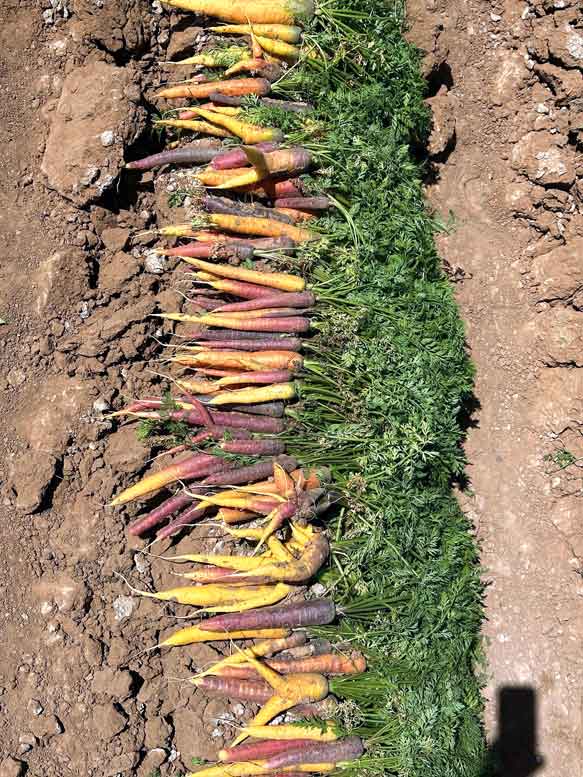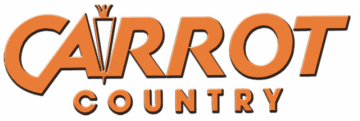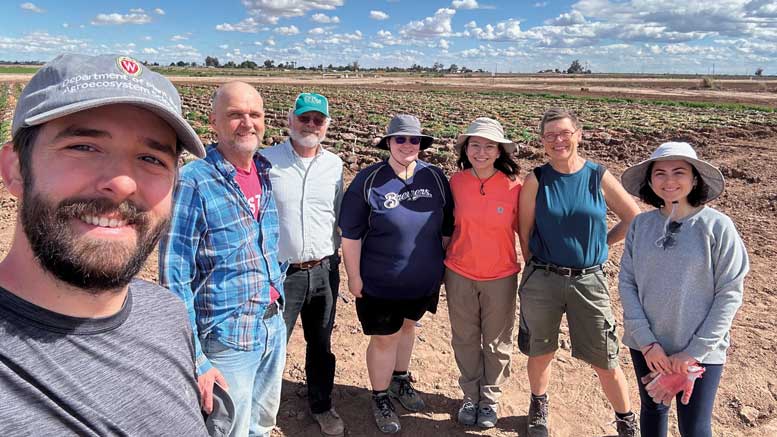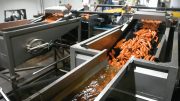|
Click to listen to this article
|
Photos courtesy Kevser Ozel, University of Wisconsin
The 2024 USDA carrot hybrid trial illustrated the broad range of possible options available to growers. The trial, planted at the University of California Desert Research and Extension Center in El Centro, California, in mid-October 2023, featured 76 baby carrots, 87 cello types and 90 novelty types of different shapes and colors.

Following a relatively normal growing season, carrots from each entry were dug and displayed with tops attached shortly before a field day in early March. The approximately 50 seed company reps, carrot growers, researchers and students in attendance scored entries for traits such as uniformity, shape, color, size and percentage of marketable roots.
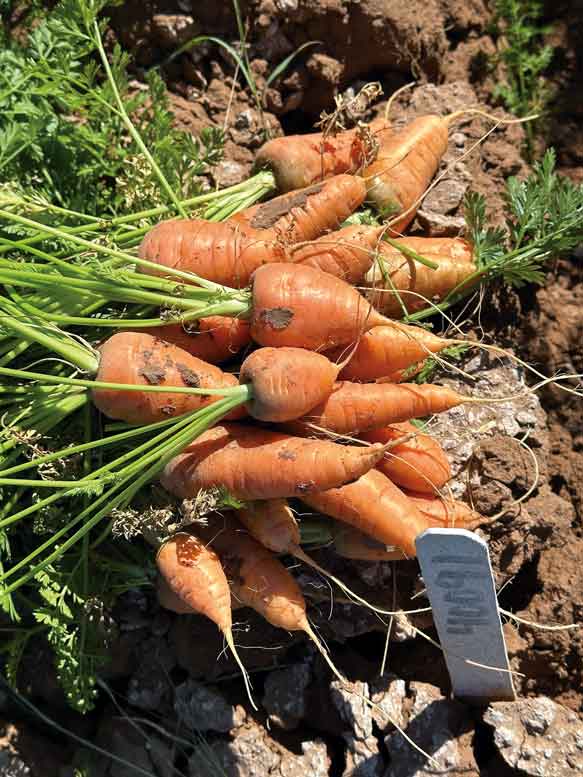
Many hybrids performed well during the season; however, sprangling was higher than usual this year, according to Tom Horejsi with the USDA-ARS, who helps set up the trial.
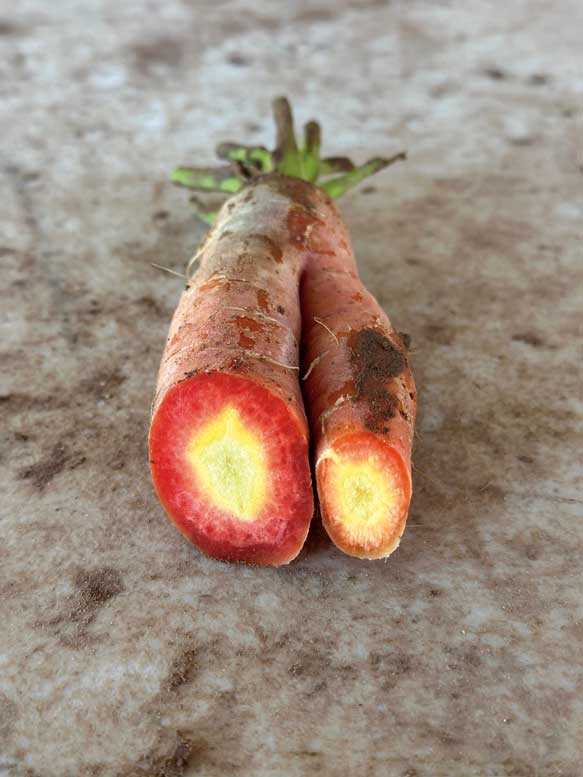
The annual trial has been taking place since the late 1960s.
